This article is taken from the History of War Website and on the eve of the Centenary of the Battle of the Somme makes interesting reading – how did already busy medics treat almost 60,000 casualties on that first day.
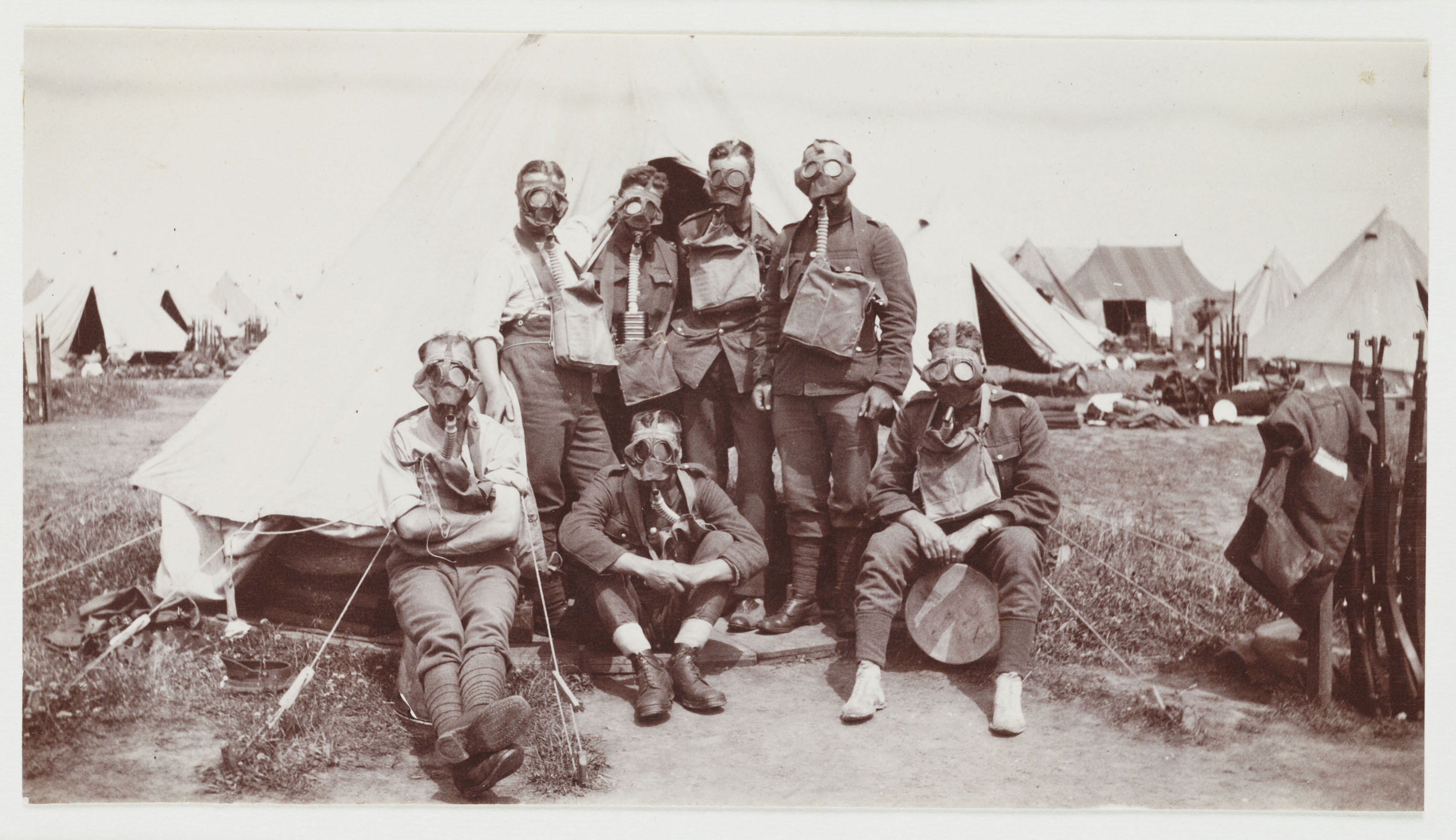
The Battle of Somme is – rightly or wrongly – a byword for military folly, a baptism of blood for the earnest volunteers of Kitchener’s New Army that saw entire villages and workplaces wiped out by shell, shot and chlorine gas.
Wounded: Conflict, Casualties and Care, which opens 28 June and runs until January 2018 at the Science Museum in London, explores the huge impact of wounding in World War I. We spoke to Lead Curator Stewart Emmens about the role of the Somme in the evolution of battlefield medicine, the horrific litany of wounds suffered, and how they were treated.
The first day of the Somme caused an immense 57,000 casualties. What was the immediate impact of that for the men and women administering to them in those vital first hours?
This was the highest number of casualties that British Forces have ever suffered in a single day. The devastating potential of industrialised weaponry was reaching progressively new levels during the First World War, and the physical impacts could be catastrophic. Although medical personnel had experienced nearly two years of fighting, their capabilities were constantly hampered by the scale of casualties they had to deal with and the conditions they were working in.
As on the battlefield today, blood loss was the most immediate danger to life, so dealing with it – be it violent haemorrhage or slow oozing – was a huge challenge. Rapid intervention was vital in the most serious cases and this was never easy at the best of times in trench warfare, let alone on the first day of the Somme. Many men died because nobody could treat them in time. Where they could help, medical personnel employed some well established techniques; manual pressure to stem the flow, attaching tourniquets to bleeding limbs or ligatures to tie off damaged blood vessels.
But less dramatic blood loss could also be fatal. ‘Wound shock’ was a condition characterised by falling blood pressure and the shutting down of vital functions. Initially something of a mystery, as it could strike those with only minor wounds, it was a major killer on the Western Front. While blood transfusion begins to prove its value towards the end of the war, it’s not being used on any real scale in July 1916. It was also realised that other factors apart from blood loss had an influence on the development of wound shock as experience on the front line showed that warmth, liquids and comfort could improve the chances of survival – but these were not easy to provide in the circumstances.
In the slightly longer term, infections posed a serious threat to every soldier wounded on the Somme as they were essentially fighting on heavily manured farmland. Bacterially contaminated soil, ballistics and other debris could be blasted deep inside the body. Wounds became gangrenous within hours, and many men survived blood loss and shock only to succumb to infection.
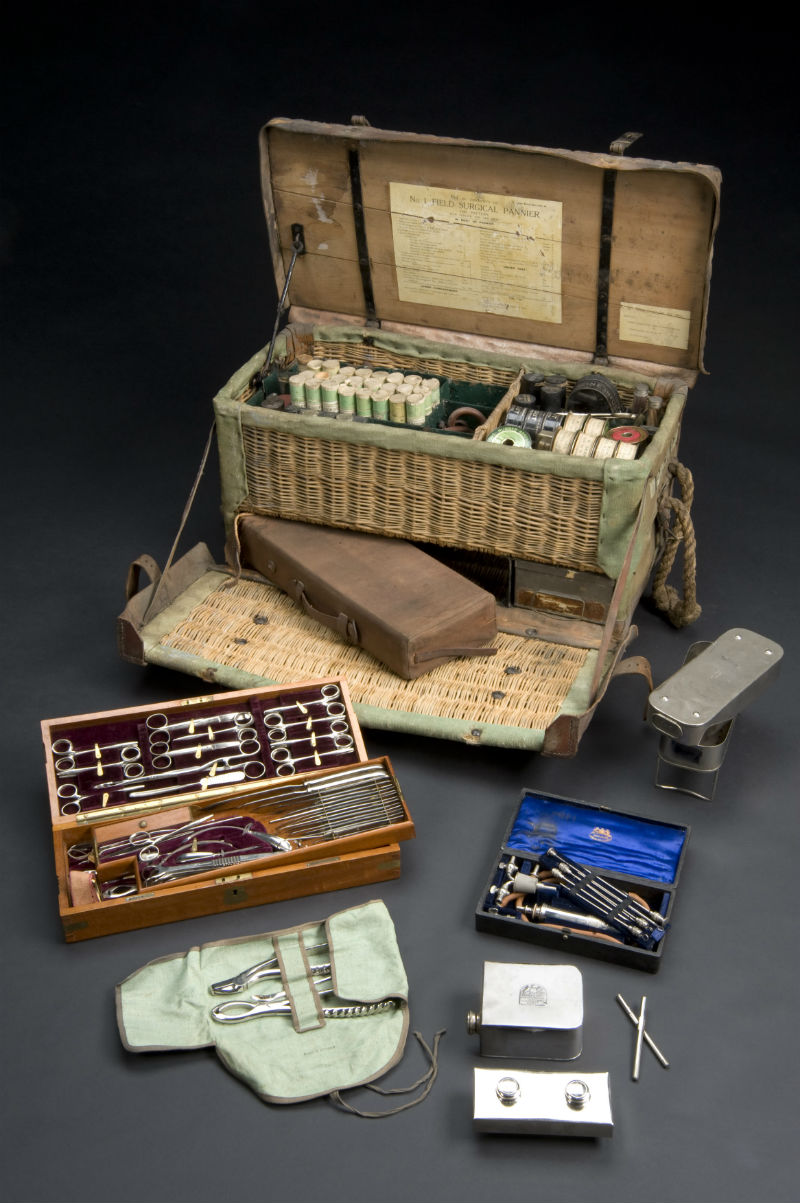
What were Casualty Clearing Stations like and what level of care were they capable of providing?
Early on in the war Casualty Clearing Stations (CCSs) lived up to their name. They were intended essentially as transit points, not heavily staffed, where casualties would be assessed and sorted then then sent on to hospitals nearer the coast or even straight onto a hospital ship. Once the static nature of trench warfare was established and the value of earlier medical treatment, nearer to the frontline, CCSs expanded and became semi-permanent facilities – positioned near enough to the front line to be easily accessible, but out of range of most of the German artillery.
Wherever possible they were established in buildings; convents, schools, factories and existing hospitals, often expanding into huts and tents to provide more accommodation. As the war progressed they became centres of specialist medical care, furnished with the latest technology including x-ray equipment for locating metal shell fragments, blood transfusion equipment, and a suite of operating theatres. We have many examples of this specialised and now rare equipment in theWounded exhibition.
The surgeons at a CCS had several core objectives. One was to patch up the lightly wounded for return to the front. Another was to stabilise then forward those with moderate injuries to hospitals further down the line. They also performed life-saving surgery on the most seriously wounded. At a CCS, the wounded were likely to encounter female carers for the first time, as trained nurses were assigned to the units from October 1914. Some nursing tasks could be mundane and repetitive; others required technical skill and carried great responsibility. Nurses administered pain relief, re-dressed wounds and assisted in the operating theatre. At busy times, some also carried out surgical procedures.
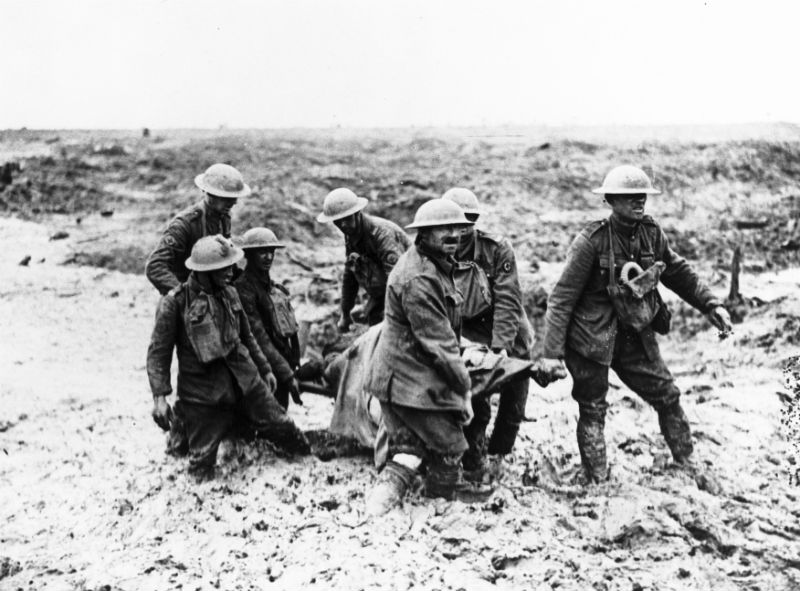
The link between CWG sites and the locations of Casualty Clearing Stations is particularly sobering. What happened to the men who died in the CCSs – or who arrived dead – and how was their death processed?
As CCSs became established and grew into much larger sites, with operating theatres, various diagnostic facilities and hundreds of beds they inevitably became places where many thousands would succumb to their wounds. When wounded soldiers arrived at CCSs, many were beyond help. Initially, hopeless cases were often transferred to die in so-called ‘moribund wards’, where their passing was eased as much as possible – when time allowed. Towards the end of the war, doctors recognised that salvation for some could lie with blood transfusion, and although the method was fraught with difficulties, as the war continued viable methods began to emerge. By 1918, those entering a growing number of so-called ‘resuscitation wards’ had at least a chance of surviving. One of the earliest blood transfusion devices is on display in ourWounded exhibition.
From September 1914, a British Red Cross unit began to collect information about British fatalities and the haphazard location of graves. Graves Registration Units soon became incorporated into the army and were responsible for recording the burial of the dead and the cemetery sites, partially in response to public concern about the recovery, identification and proper burial of their loved ones. However, with such huge numbers of casualties, many deaths were still recorded as missing or fell through the administration process.
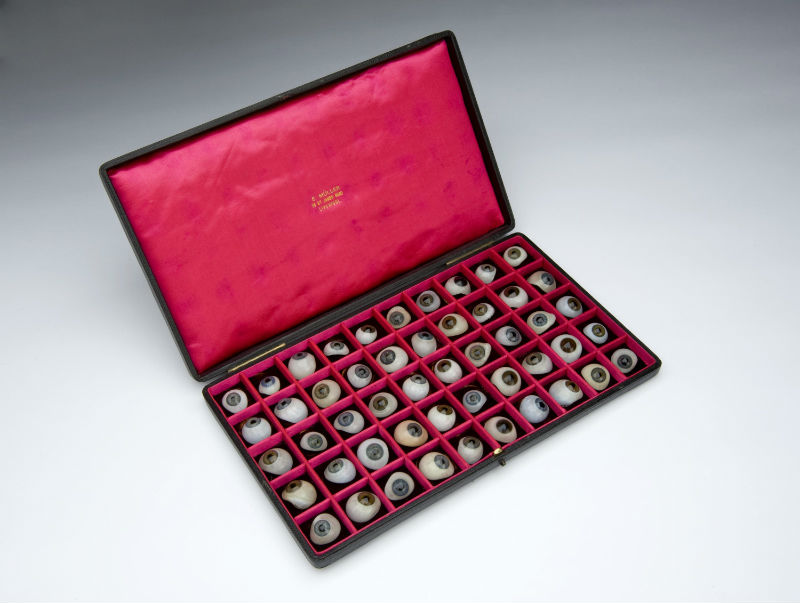
What were the major innovations in trauma care at the time of the Somme, and how did the experiences of the Somme inform or inspire changes in trauma care?
It’s difficult to link specific changes – or indeed clear fundamental shifts in care – to the experience of the Somme, but the events of 1916 do feed into the improving and expanding medical services. While continuing to be overwhelmed at times throughout the remainder of the war they are implementing best practice and proven strategies based on what has been experienced as they deal with the daily flows of casualties.
Innovations in medical treatment during the war were not always the result of new techniques or technologies – often it was the rediscovery and wide scale application of ideas and equipment that helped to save lives.
Early in the war, around 80 per cent of British soldiers with fractured femurs (thighbones) were dying. During the slow evacuations over bumpy terrain, their unstable broken bones caused further, often fatal, bleeding. In such conditions, standard-issue splints or improvised supports such as rifles were of limited value. The re-discovery and wide scale application of a Victorian medical device – the Thomas splint – dramatically reduced both death rates and the degree of long-term disability.
Another example is the way in which infected wounds were treated. Belgian surgeon Antoine Depage led the successful call for the return of débridement – an 18th-century practice of thoroughly cutting away all of the damaged and infected tissue. It remains a crucial tool of infection control in trauma medicine.
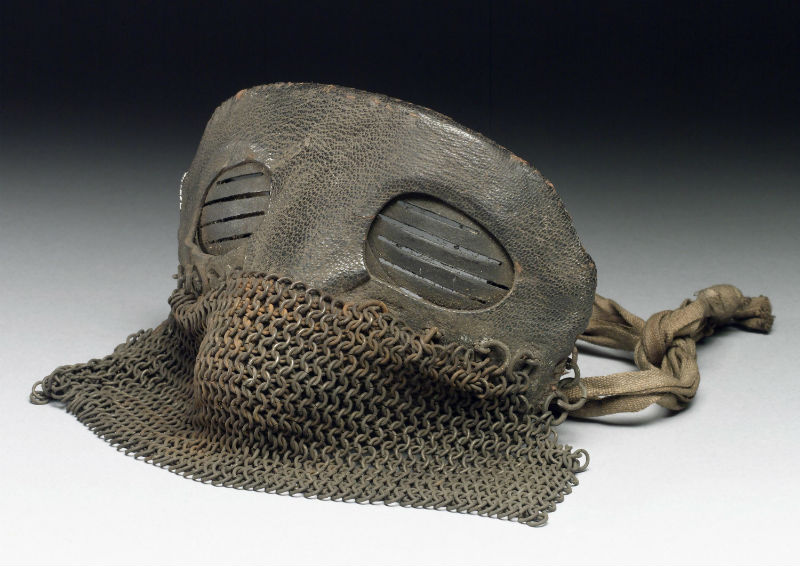
The prevalence of shrapnel – and the existence of the ‘splatter mask’ is testament to the unique horror set aside for facial scarring. How was this treated?
Over four years, thousands of men received serious facial wounds, and these devastating injuries prompted major advances in specialist fields of reconstructive surgery. In Britain, progress was driven by New Zealand surgeon Harold Gillies. Having treated over 2,000 cases from the Somme, he lobbied for the establishment of a specialist hospital for facial injuries, and in 1917 the Queen’s Hospital in Sidcup, Kent was opened. Rebuilding a damaged face could take many years, and patients at Sidcup might undergo multiple procedures and operations, with each stage of treatment painstakingly recorded in case notes. Some did not survive the ordeal.
Gillies quickly appreciated that 3D imaging could transform the work of the plastic surgeon. A team of sculptors was brought to Sidcup to make plaster casts of the men’s faces. With a solid record of the damage, ears, noses and chins might then be added – often in Plasticine – to show how a soldier’s face could look after surgery. Among Gillies’ key advances was a skin-grafting method called the ‘tubed pedicle’ technique. Here a flap of skin was separated, but not detached, from a healthy part of the soldier’s body and then attached to the injured area. There it was rolled into a tube and sewn into place to allow new tissue to form.
We will be displaying a number of Henry Tonks’ pastels in the exhibition which are on loan from the Royal College of Surgeons. Tonks drew portraits of the patients before and after surgery, in addition to producing diagrams of the operations in order to record the various stages of reconstruction. The combination of Tonks’ medical and artistic training enabled him to depict the physicality of the flesh, and to help Gillies achieve an aesthetically pleasing result.
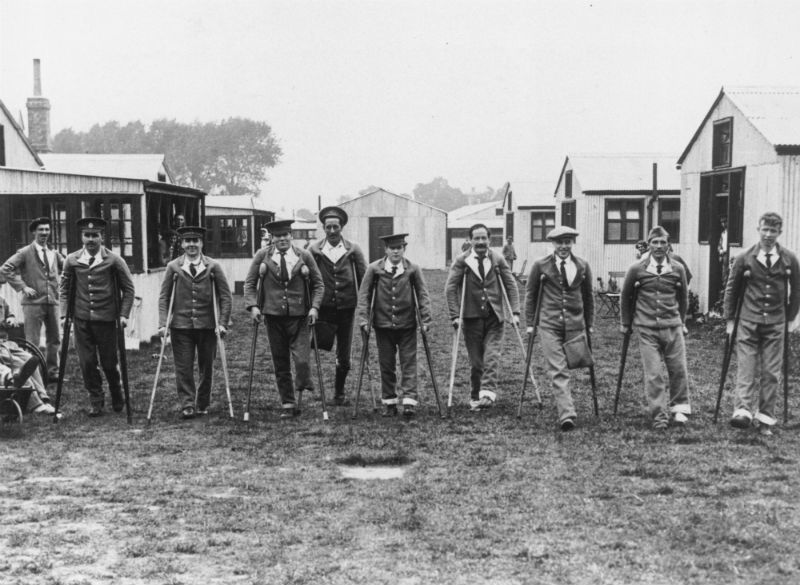
Similarly, loss of limb is now part of traumatic public memory of World War I. What sort of prosthetics were available to the wounded of the Somme, and how did these improve over the rest of the war?
British military amputees had been entitled to a free artificial limb since Napoleonic times, but within months of the beginning of WW1 existing systems of provision were overwhelmed. Only in 1915 did things really begin to be dealt with through the establishment of Queen Mary’s hospital in Roehampton, which rapidly expanded throughout the war and became the focus of limb manufacture and fitting as well as a centre of rehab and training for amputees.
Throughout the war, the majority of amputees were leg amputees. With the British limb-making industry failing to keep up with escalating demands, American manufacturers were shipped over in 1915 to set up workshops at Roehampton. As a range of manufacturers battled to meet requirements, amputees could find themselves with limbs made to varying standards. Most ‘first issue’ legs were wooden and many based on the design once popularised by the Marquess of Anglesey, who had lost his leg a century before at the Battle of Waterloo.
The Somme added significantly to the growing backlog of amputees that had to be fitted and processed. During the war waiting lists ran into four figures. While there was certainly innovation both in limb design and re-training for work the men who wore them during the war, the experience for amputees could be varied and it was only in the post war period that the situation was properly dealt with.
In their efforts to compete for lucrative government contracts in the post-war period, limb-making companies experimented with new designs and new materials. One of the fundamental shifts for amputees came with the move from wood to metal limbs. Having been issued with wooden limbs during the wartime rush, amputees clamoured for the lighter metal designs that were issued throughout the 1920s. For a range of reasons, many amputees did not wear prostheses – sometimes through choice. Limbless men on crutches or in wheelchairs remained familiar sights around the country for years.
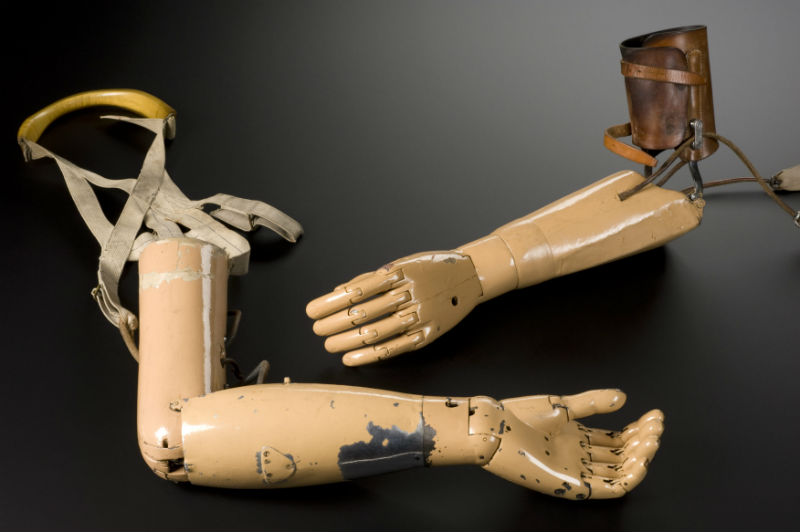
Of all the physical injuries associated with World War I, few are as grimly iconic as poison gas. As there was no precedent in the history of the British Army, how was this treated?
Many veterans remembered being more afraid of gas than of any other weapon, although it killed ‘relatively’ few men. It did wound in huge numbers, taking men away from the front and flooding the hospitals. Even for those only lightly exposed to gas, up to 60 days’ recovery might be needed before they were fit again. The treatment available to those wounded by gas was limited, at times experimental and often applied in combinations. Gases such as chlorine and phosgene essentially drowned victims as it irritated the lungs and they filled with fluid. Some doctors believed that bleeding (venesection) could help drain these toxins from the body, as could salt-water emetics, which induced vomiting. The most effective treatment for such casualties was to artificially increase the oxygen concentration of the blood, and we will be displaying an interesting example of an oxygen apparatus modified to treat four people at once.
With the arrival of mustard gas in July 1917, the medical services faced a horrifying new challenge. This gas caused severe burning of the skin, eyes and internal organs. Heavier than air, it eventually settled to further contaminate clothing, food and water. In an attempt to dissolve or neutralise the mustard liquid, various chemicals were tried, including bleach ointment, petrol and kerosene. Soap would then be used to wash off the residues. Paraffin ointment was carried in field medical kits to treat more conventional burns, but it could also be applied to the skin of mustard gas burn victims. Afterwards, salt baths were prescribed as the blisters began to heal.
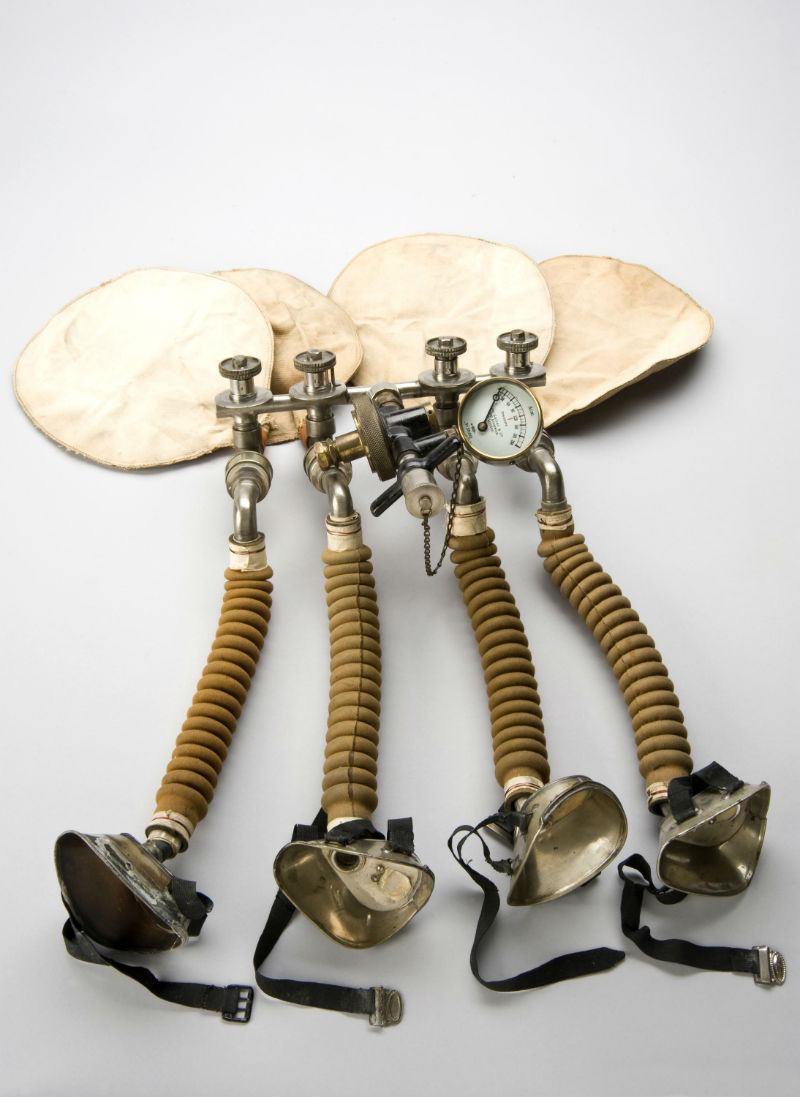
The psychological effects of battlefield trauma are all now recognised – though perhaps not as widely as we’d like – and are remembered as part of the memory of World War I. At the time of the Battle of the Somme, what understanding of the psychological effects of combat existed?
Early in the war doctors had begun to see a new phenomenon. Large numbers of men, apparently unharmed, displayed bewildering symptoms that might include paralysis, anxiety, dizziness, muteness, deafness, terrifying dreams, vomiting, extreme fatigue, chest pains and tremors. It was initially believed that these were physical reactions from being in close proximity to an exploding shell, hence the catch-all term ‘shell shock’ – though this term was not coined until 1917.
Shell shock numbers began to rocket as the Battle of the Somme progressed. The numbers involved greatly concerned military authorities who worried that it was in effect an almost ‘contagious’ form of hysteria which could affect entire units at a time – and there remained both a lack of clear understanding about why it was happening as well as very inconsistent approaches to treatment regime. In December 1916, losses to shell shock (mainly on the Somme) created a manpower crisis. Rather than send men way down the line and very often back home, forward psychiatric units for the rapid treatment of shell shock were established. They were called ‘Not Yet Diagnosed Nervous (NYDN) in part to avoid medical terminology.
Most shell shock cases would eventually be acknowledged as emotional collapses from the stress and horror of this war. Sometimes, however, such men were accused of shirking or cowardice. Many of the 306 British and Commonwealth servicemen executed during the war are now believed to have been shell-shocked.
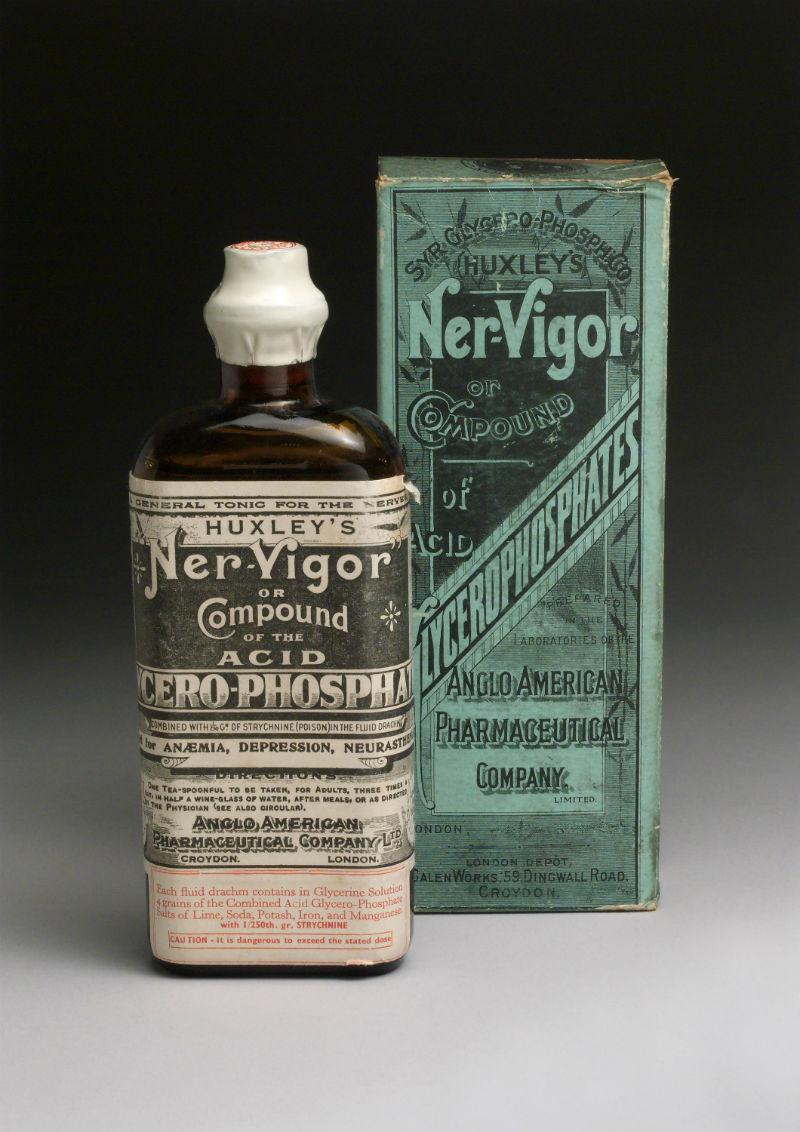
Given how prominent forces charities are in modern Britain, it’s incredible to discover that Blind Veterans and Combat Stress who worked with the Science Museum on Wounded: Conflict Casualties and Care have their roots in World War I. What role did these organisations – and organisations like them – play in the lives of wounded servicemen?
Charity was central to caring for the wounded during the First World War, and over the four years thousands of charities were established. These provided everything from basic comforts to specialised support for disabled servicemen – although many would be disbanded shortly after the war ended. Through the Ministry of Pensions, the government funded a network of hospitals and outpatient clinics for wounded veterans, working closely with the British Legion charity, but other smaller charities got involved too.
The Ex Servicemen’s Welfare Society (ESWS), now known as Combat Stress, was established in 1919. Much of its efforts were focused on veterans with shell shock who were denied pensions, sent to lunatic asylums or unable to find work. It eventually established special homes where men could rest, socialise and learn new skills. The ESWS recognised that men with mental health wounds struggled to compete for jobs. So in 1927 it established its own company, Thermega, and purchased the patent rights for the first electric blanket produced in the British Empire. The blankets were sold for profit – an example of ex-servicemen manufacturing a product that was commercially successful on the open market.
In regard to sight loss, throughout the war thousands of soldiers returned to Britain with total or partial sight loss. This was the result of gas, bullets and explosives, venereal disease and other traumas. Medical personnel could treat the physical wounds of the eyes, if the eyes were still present, but they could not offer long-term rehabilitation. Newspaper magnate Arthur Pearson stepped forward with a solution. Having lost his own sight to disease, Pearson was determined that every sight-loss veteran be offered the necessary tools to live an independent life. To achieve this, and to help raise national awareness for those who had lost their sight, he established St Dunstan’s Lodge in Regent’s Park, London, where new life skills could be learnt including typewriting, reading braille, basket weaving, physiotherapy and farming.
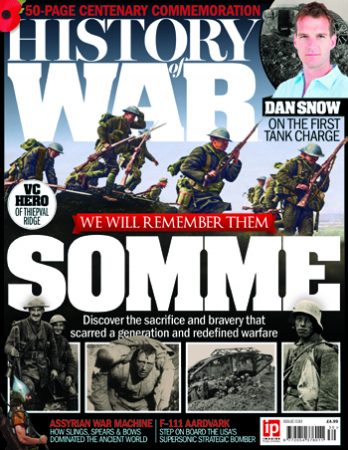
British Limbless Ex-Service Men’s Association (BLESMA) is another current veterans organisations that emerged from WW1. They’re a good example of ‘self-help’ – established mainly through the actions of the veterans themselves who were beginning to feel forgotten during the 1920s. Unfortunately, the post-war years were a time of disillusionment, as many amputees could not find regular work. Like hundreds of thousands of others wounded in the First World War, many amputees were also living in chronic pain – a situation which went of foe decades in some cases. Feeling neglected, they decided to help themselves. By the early 1930s, a network of local groups had coalesced nationally as BLESMA.
Wounded: Conflict, Casualties and Care opens 28 June and runs until January 2018 at the Science Museum in London. Entry is free. For more on the Battle of the Somme, pick up the centenary special issue of History of War or subscribe now and save 25% off the cover price.
